Located in the old town of Tallinn, the former church is now a branch of the Art Museum of Estonia and contains the most extensive collection of ecclesiastic art in Estonia.
The church itself is believed to have been founded in the middle of the 13th century, although the first written record of it dates from 1315.
Constructed by German merchants it has a rectangular chancel: The three-ailed main body, a vestry and the lower part of the tower were added by the end of the century. The main body of the church at that time was the same as the current one although considerably lower.
As Tallinn at that time did not have a town wall, the church also served as fortification, having narrow windows, defence passages along the outer walls with sanctuaries above the aisle and heavy bars to close off the entrances.
During the 14th century, a number of chapels were built at the northern end and the chapel of St Matthew was constructed at the southern side of the tower.
The 15th century was a time of prosperity for Tallinn, resulting in significant reconstruction of the church. It was during the first two decades that the chancel and nave took on its current appearance, with the replacement of the original chancel with one as wide as the main body of the church, which was covered with simple groined vaults. The reconstruction resulted in the enlarging of the windows and the positioning of buttresses to support the walls in order to resist the trust from the vaults. It also included the construction of a new vestry. From 1486 – 1493 the chapel of St Matthew was rebuilt, and was to become known as the Chapel of St Andrew. This gave it the present four-bays with a central pillar. In the subsequent years, the tower was raised and strengthened.
During the night of 9th March 1944 Tallinn was bombed by the Soviet Air Force, resulting in the church suffering extensive damage though fire; destroying most of the historical interior, including the pulpit and the benches. In 1953 reconstruction work began and in 1984 the church was adapted as a museum and concert hall. Today it is one of the most beautiful examples of Late-Gothic architecture in Estonia and is dedicated to St Nicholas, the Patron Saint of merchants and seamen and contains exhibits from the 13th to the 18th centuries.
Located in one of the chapels is the Danse Macabre or Dance of Death by Bernt Notke (1440-1509). It is the most well-known medieval artwork in Estonia and is the only medieval Danse Macabre painted on canvas. This work is only part of the original, although it is not known how much larger the original was. Another Danse macabre painted by Notke is known to have had 49 figures; the segment here contains 13 figures.
The church also contains a number of altar pieces and (a framed altar piece consisting of at least three parts which has a central panel and is flanked by wings which can be folded) from the Middle Ages depicting various scenes. It also contains many sculptures and carvings including one of St Christopher holding a staff in one hand and carrying a globe on his back symbolizing Christ and the sins of the world. This once formed part of the support for the pulpit of the church, the remainder of which was destroyed in the bombing of 1944.
The Baptistery dates from the 1680s and is the only preserved Lutheran Baptistery in Estonia. Octagonal in shape the azure walls surrounded the font which is in the shape of chalice, which has not survived.
A number of tombstones are located in the church, both on the floor and hanging on the walls. Other items of note are the Epitaphs in the form of icons and coats of arms.
The church also contains a silver chamber which houses a fine collection of silver.
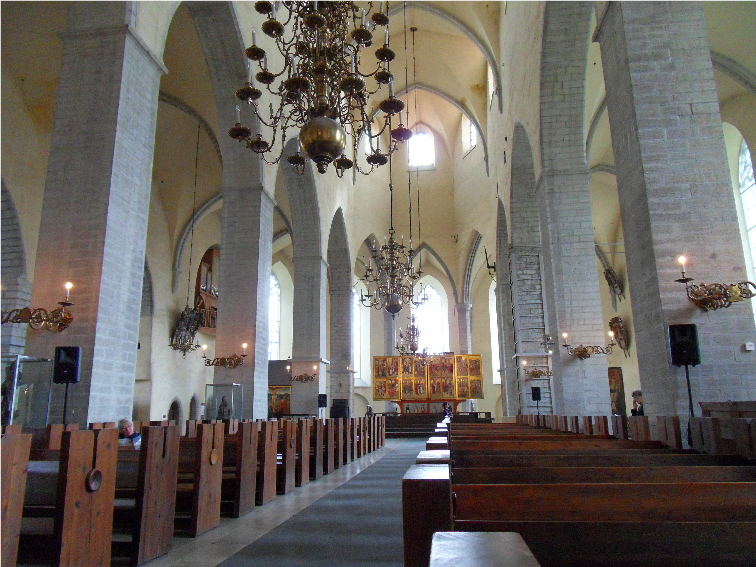
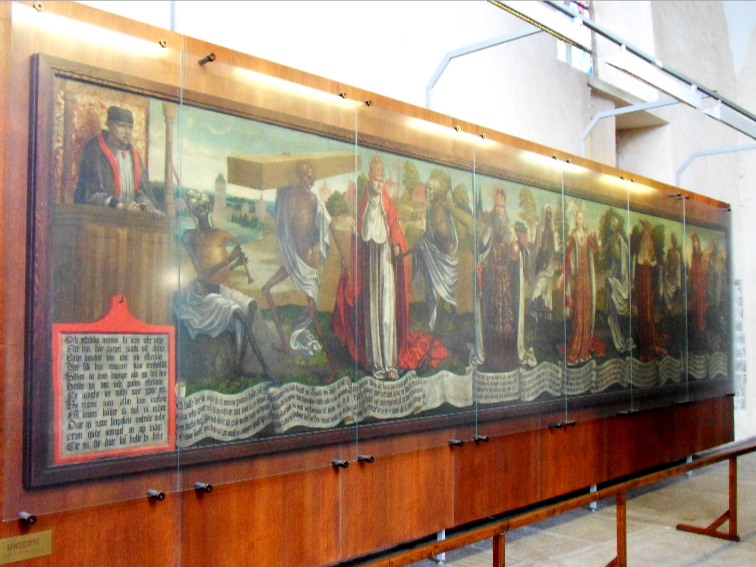
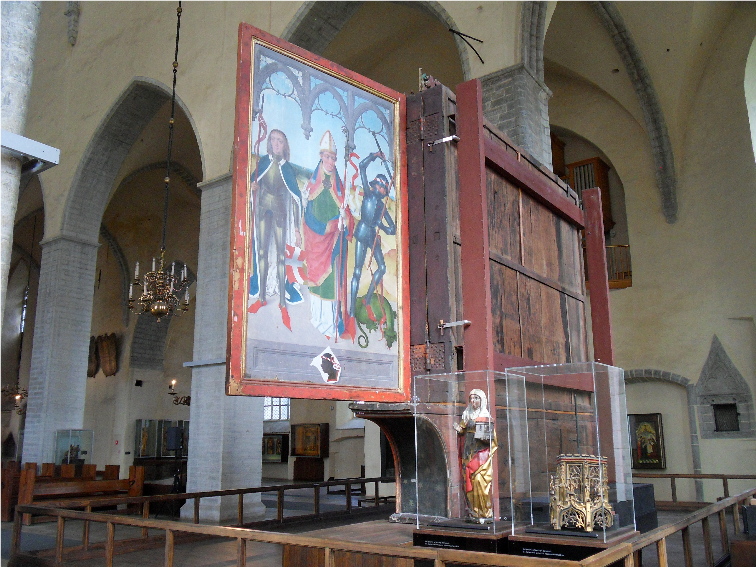
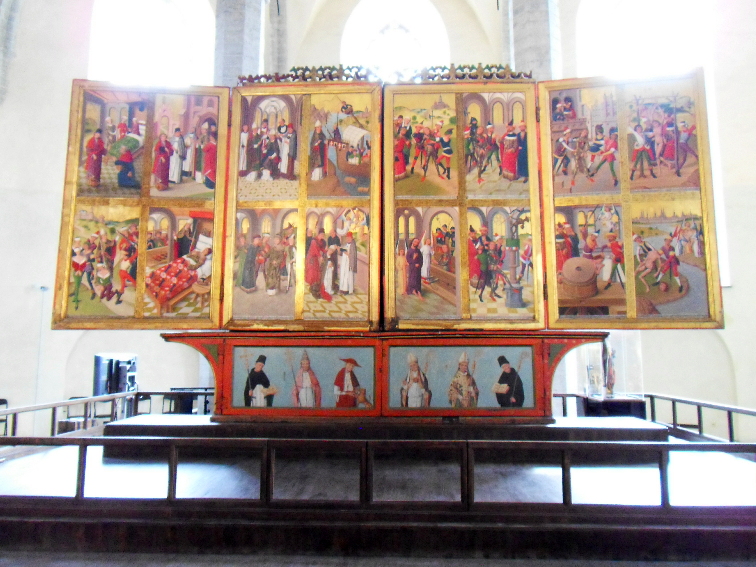
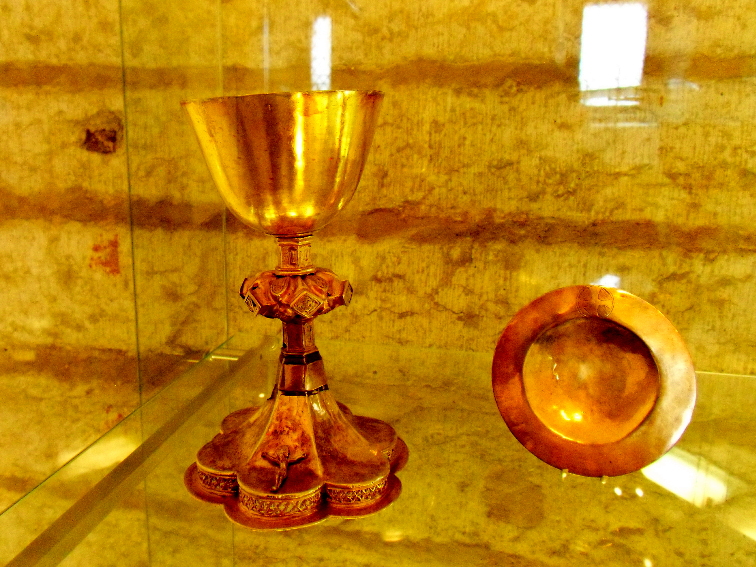
To see more photographs and take a virtual tour of the site click on the photoshow below.





